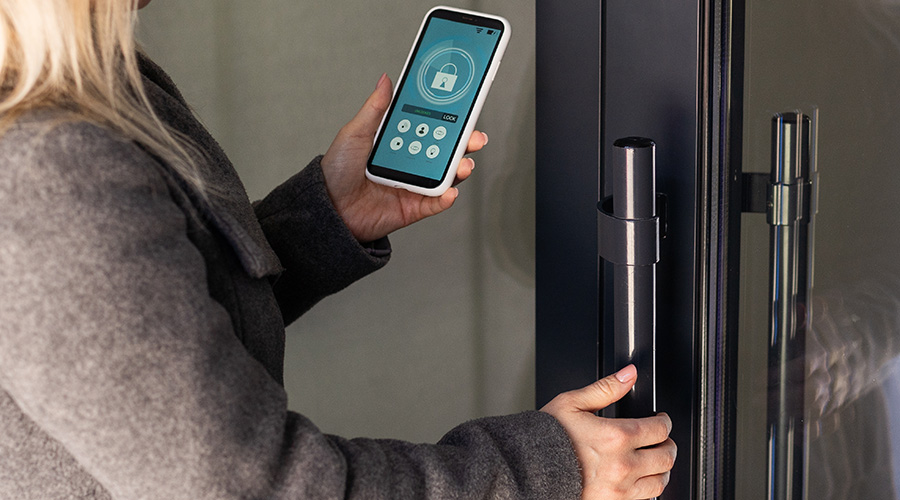Access Control Holds the Key to an Integrated Security Plan
The array of security concerns can put facilities managers in a difficult spot.
By Doug Carroll, Contributing Writer
It’s the facility manager’s job to protect a large institutional and commercial facility and its occupants from security threats, and the manager has been charged with developing a comprehensive plan to keep the site safe.
It seems obvious that video surveillance will be enhanced by investing in more security cameras. That would be a good place to start, right?
Probably not, if the goal is to have an integrated security plan. Surveillance is much less important than access control and intrusion detection, which are “the big drivers” in security today, according to Matthew Harper of Jensen Hughes, a global consulting firm.
“Monitoring surveillance is not a realistic approach (by itself),” Harper says, noting that cameras often aren’t useful until after damage has been done — if then. He’s not a fan of having a security guard or two sit and watch a bank of screens without other measures in place.
Access control puts the emphasis on the front end, ideally heading off trouble instead of responding to it. Intrusion detection, which encompasses motion, door contact and glass breakage, also matters.
About 50 percent of the growing physical security market — which had revenue of $132.5 billion in 2022 — consists of access control. Physical security refers to the measures and strategies to protect physical assets, individuals and information from unauthorized access, theft, damage or harm.
Demand for “frictionless” access control has soared in recent years, Harper says, because of advances in technology. Mobile applications can leverage Bluetooth and capacitive technologies to allow for access. An employee can keep their mobile device in their pocket, then wave their hand near a reader … and the door unlocks.
“The idea is that as I walk up (to a building), it will recognize me and let me in without a card or a key fob,” Harper says. “There are now cameras with AI analytics that can recognize you. A hotel manager could create a custom database of employees. Staff would have access to certain areas but not to others.”
RFID technology is another form of frictionless access control. With a device implanted on a badge, it can recognize an authorized person’s presence and track their location inside a building. Such information can then be used to reposition staff and increase efficiency.
Harper says the security work of Jensen Hughes is split evenly among new business, remodeling and historical preservation. Designing an integrated plan becomes easier after stakeholder concerns are identified, and those can vary depending on the client, the site, the city or the region.
“We take each project and assess it appropriately,” he says. “You might see things in Reno that you don’t see in Oakland. A business like Amazon might approach things differently. A lot of big companies are automating facilities, and that might be different from companies with more employees.
“The human element is really important in assessing security. Today you’re dealing with mass shootings, theft, homelessness and a number of things.”
That array of concerns sometimes places busy facility managers in a difficult spot.
“Sometimes they’re being put in security roles they shouldn’t be in,” Harper says. “We champion the hiring of a security manager, but it’s not always feasible.”
After a plan has been adopted, he says, Jensen Hughes revisits it with the client at the one-year mark to see how it is working.
“That’s extremely valuable to us, because it’s not a code-driven effort like it is for fire alarms,” Harper says. “We get more out of that check-in than we do with the design. We rely on collaboration throughout a project’s life cycle. We want to know how it will look in three years and in 20 years.”
Doug Carroll is a freelance writer based in Chandler, Arizona.
Related Topics:












